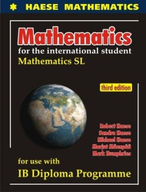Solution Found!
At a charity event there is a money-raising game involving a pair of ordinary dice. The
Chapter 23, Problem 14(choose chapter or problem)
At a charity event there is a money-raising game involving a pair of ordinary dice. The game costs $a to play. When the two dice are rolled, their sum is described by the variable X. The organisers decide that a sum which is less than 4 or between 7 and 9 inclusive is a loss of \(\$ \frac{a}{3}\), a result between 4 and 6 inclusive gives a return of $7, and a result of 10 or more gives a return of $21.
a Determine \(\mathrm{P}(X \leqslant 3), \mathrm{P}(4 \leqslant X \leqslant 6), \mathrm{P}(7 \leqslant X \leqslant 9) \text {, and } \mathrm{P}(X \geqslant 10)\).
b Show that the expected gain of a player is given by \(\frac{1}{6}(35-7 a)\) dollars.
c What value would a need to have for the game to be ‘fair’?
d Explain why the organisers would not let a be 4.
e If the organisers let a be 6 and the game was played 2406 times, estimate the amount of money raised by this game.
Questions & Answers
QUESTION:
At a charity event there is a money-raising game involving a pair of ordinary dice. The game costs $a to play. When the two dice are rolled, their sum is described by the variable X. The organisers decide that a sum which is less than 4 or between 7 and 9 inclusive is a loss of \(\$ \frac{a}{3}\), a result between 4 and 6 inclusive gives a return of $7, and a result of 10 or more gives a return of $21.
a Determine \(\mathrm{P}(X \leqslant 3), \mathrm{P}(4 \leqslant X \leqslant 6), \mathrm{P}(7 \leqslant X \leqslant 9) \text {, and } \mathrm{P}(X \geqslant 10)\).
b Show that the expected gain of a player is given by \(\frac{1}{6}(35-7 a)\) dollars.
c What value would a need to have for the game to be ‘fair’?
d Explain why the organisers would not let a be 4.
e If the organisers let a be 6 and the game was played 2406 times, estimate the amount of money raised by this game.
ANSWER:Step 1 of 5
a)
When two dice are rolled, then the sample space has \({6^2} = 36\) points, and if X is the sum of the numbers on the upper face, then the probabilities of each value are given by the table below:
